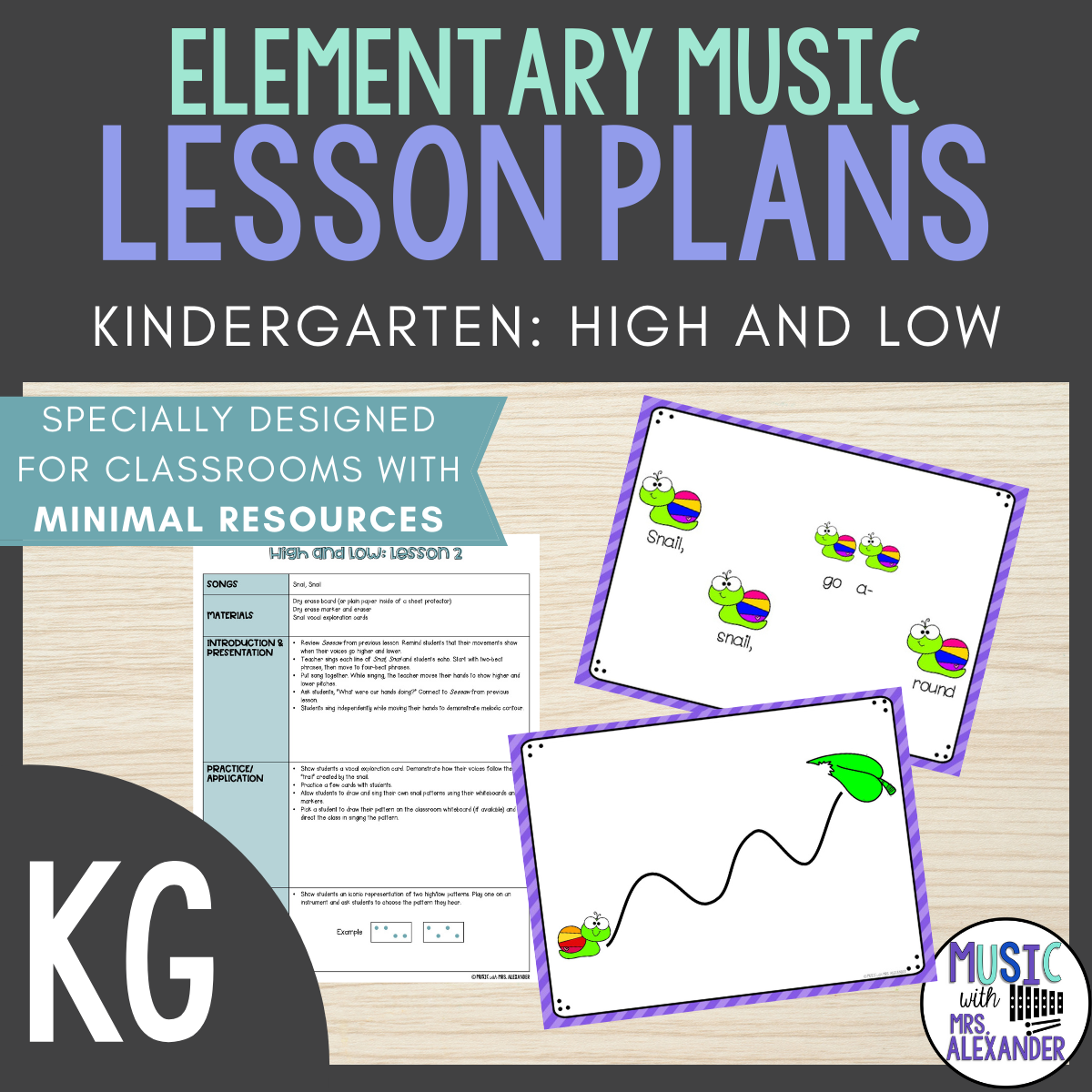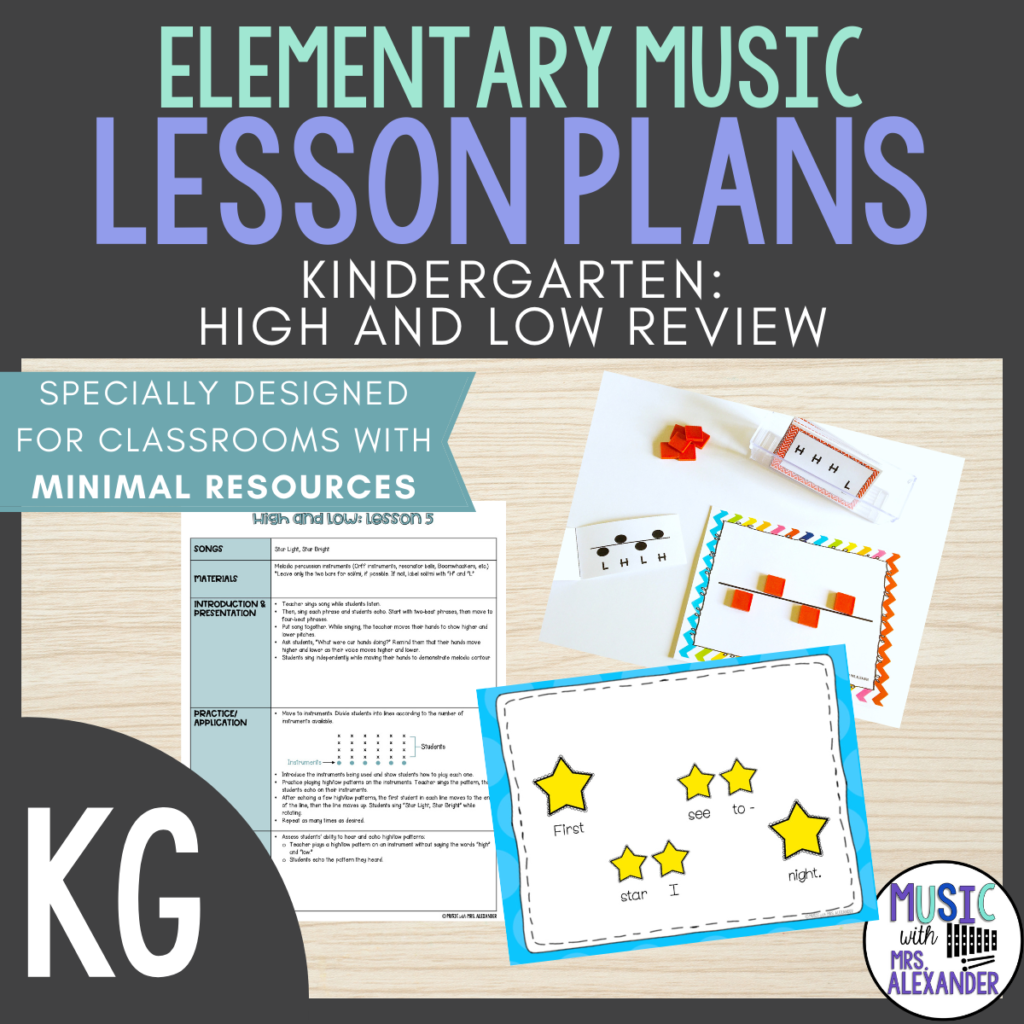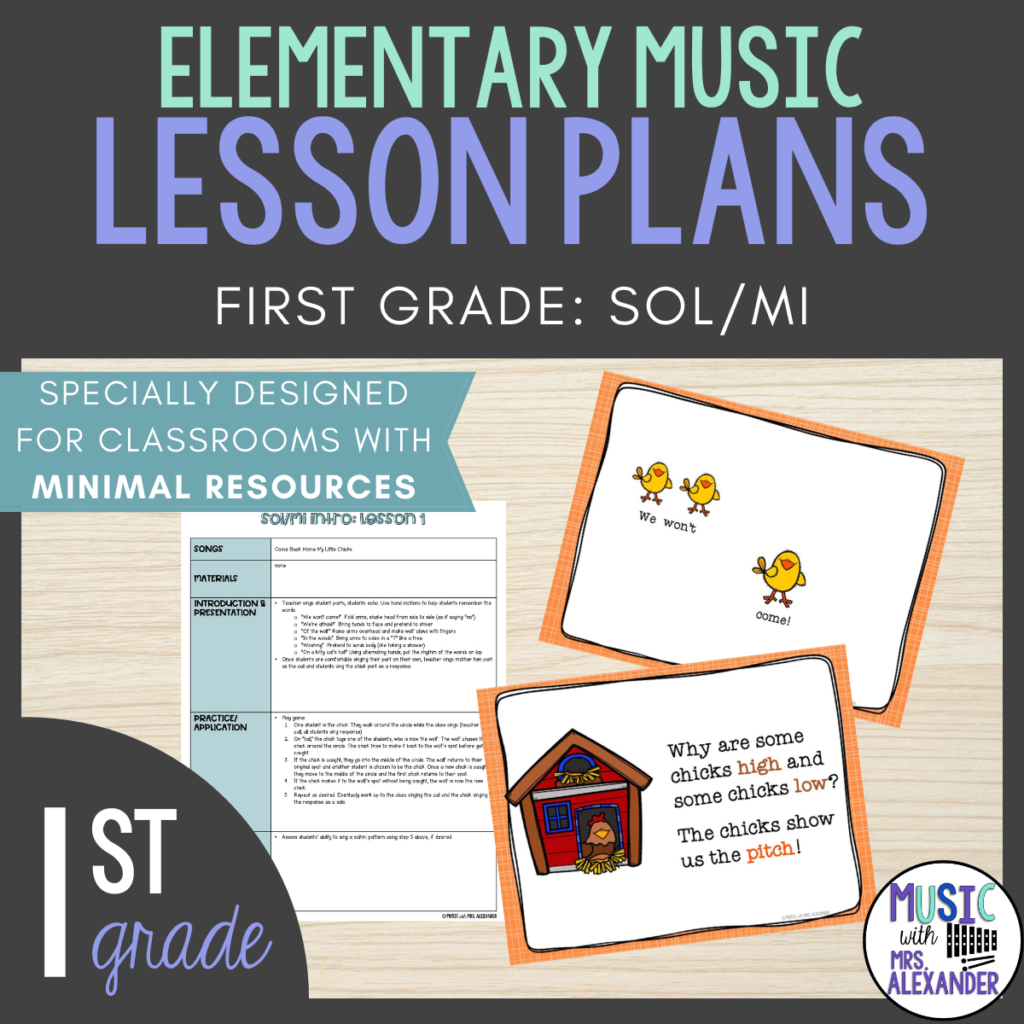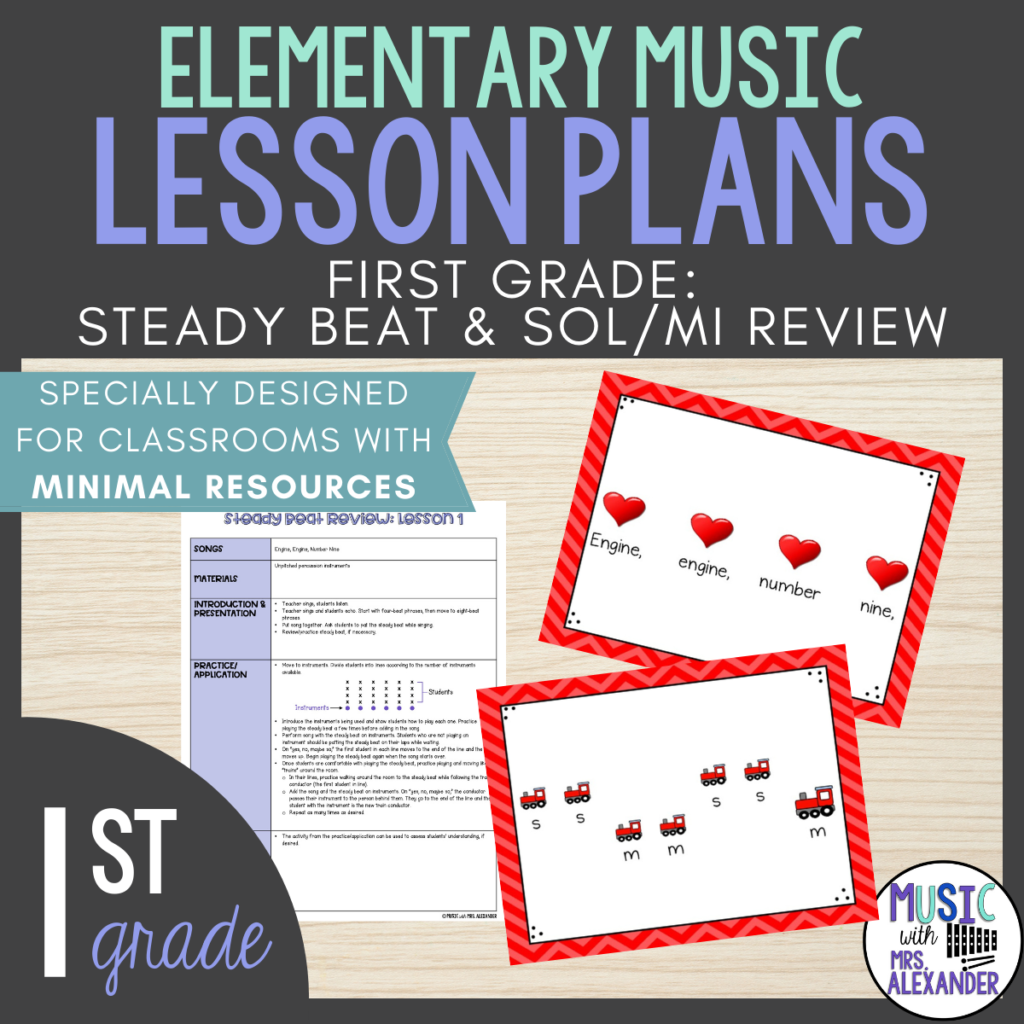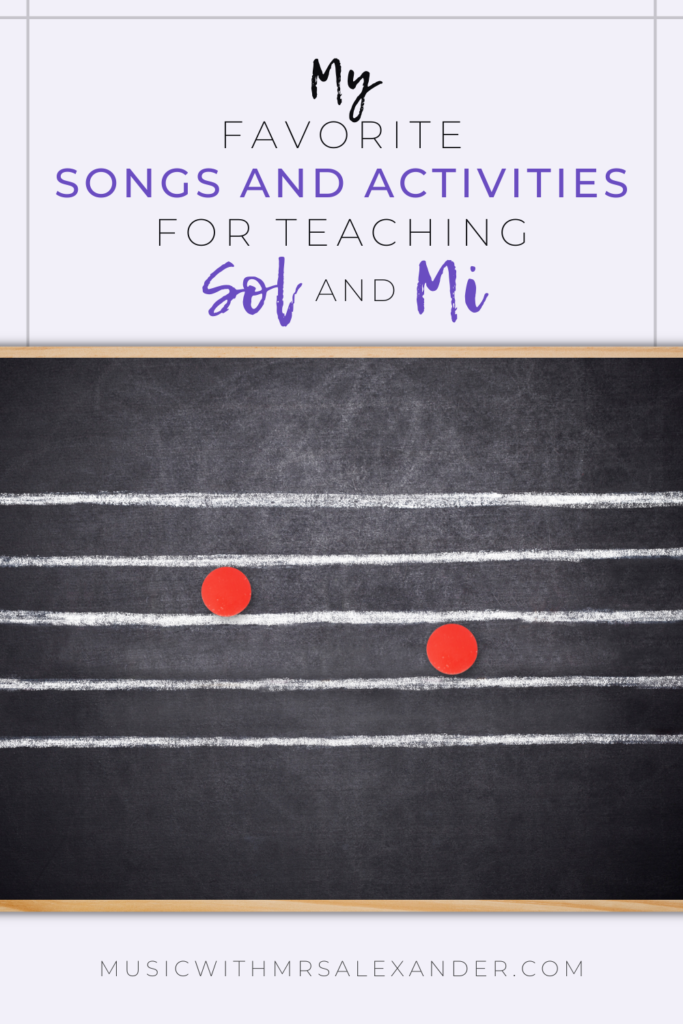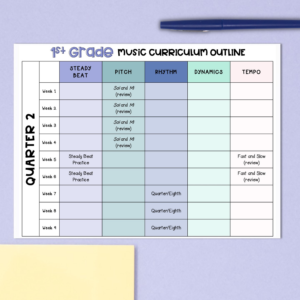Sometimes it can be challenging to make limited-tone songs engaging and interesting for your students. In this blog post, I’ll share some of my favorite songs and activities for teaching sol and mi.
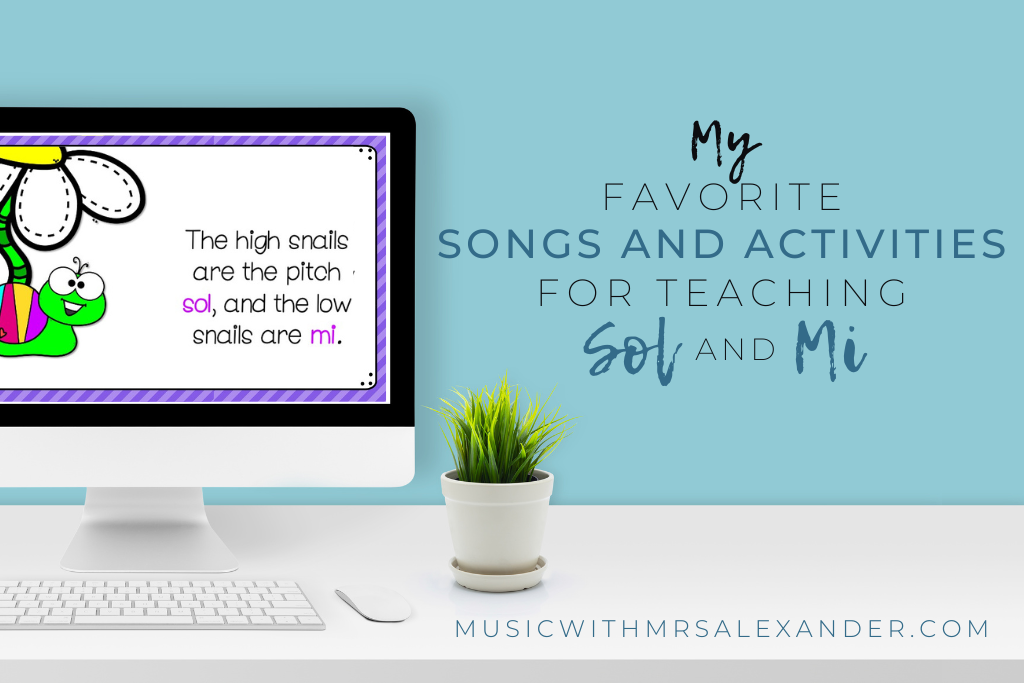
Songs for teaching sol and mi
Engine, Engine, Number Nine
Engine, Engine, Number Nine is one of those songs I use to teach a TON of different concepts: steady beat, beat vs. rhythm, high/low, tempo, you name it! We start by learning the song and patting the steady beat while singing. Then, we add instruments. Once the students can do that independently, we create ‘trains’ and march around the room while singing and playing. On yes, no, maybe so, the first student in line (the train conductor) passes the instrument to the next person and moves to the back of the line. We keep going until everyone has had a few turns…or until we run out of steam!
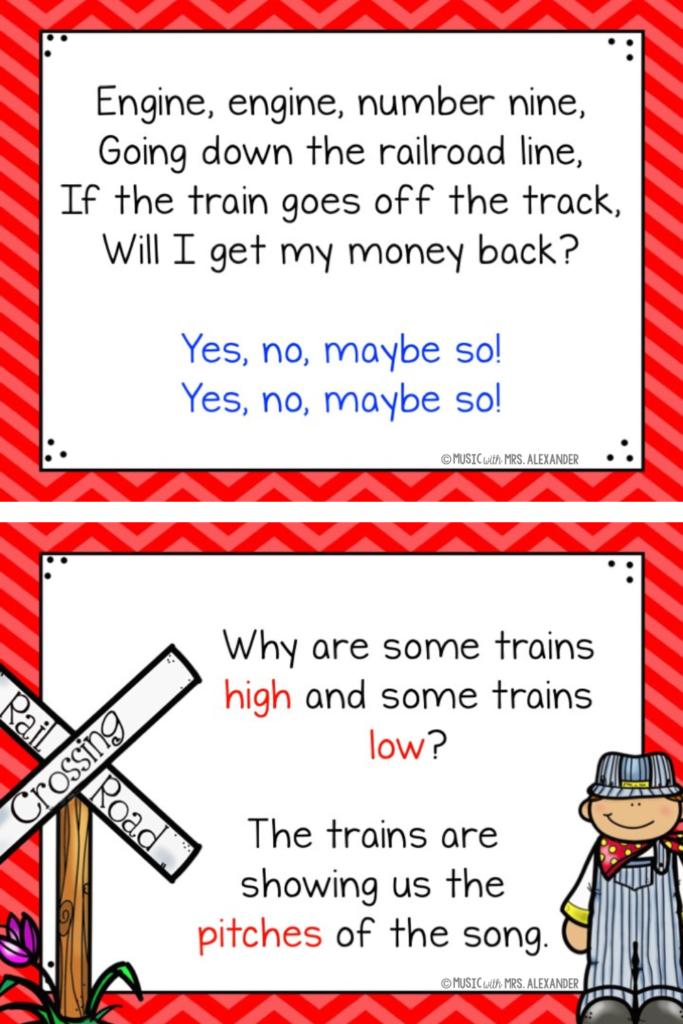
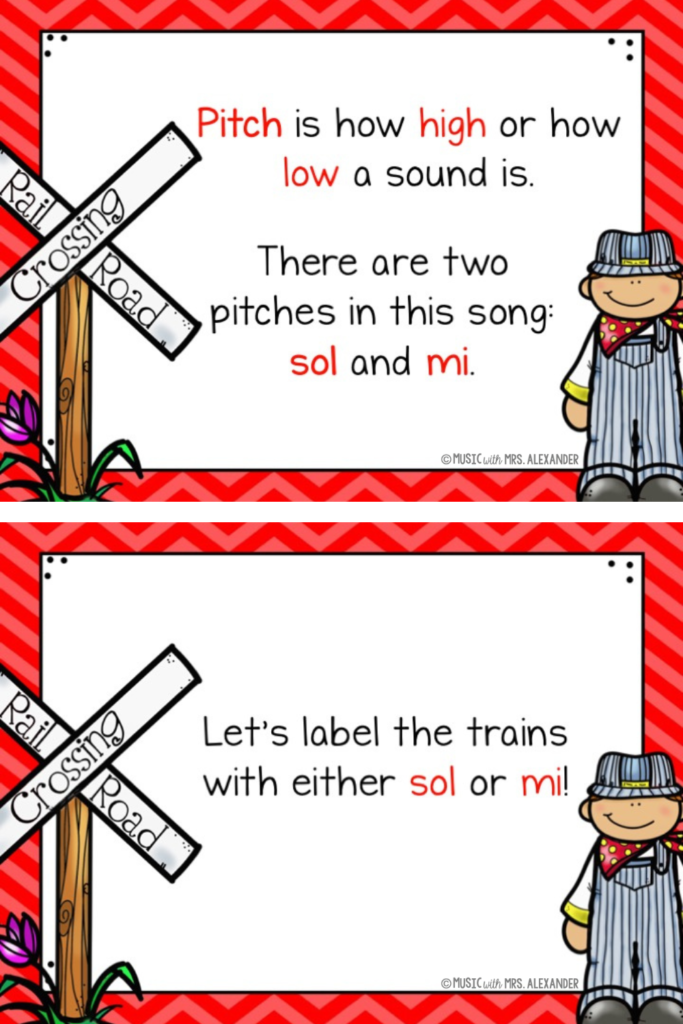
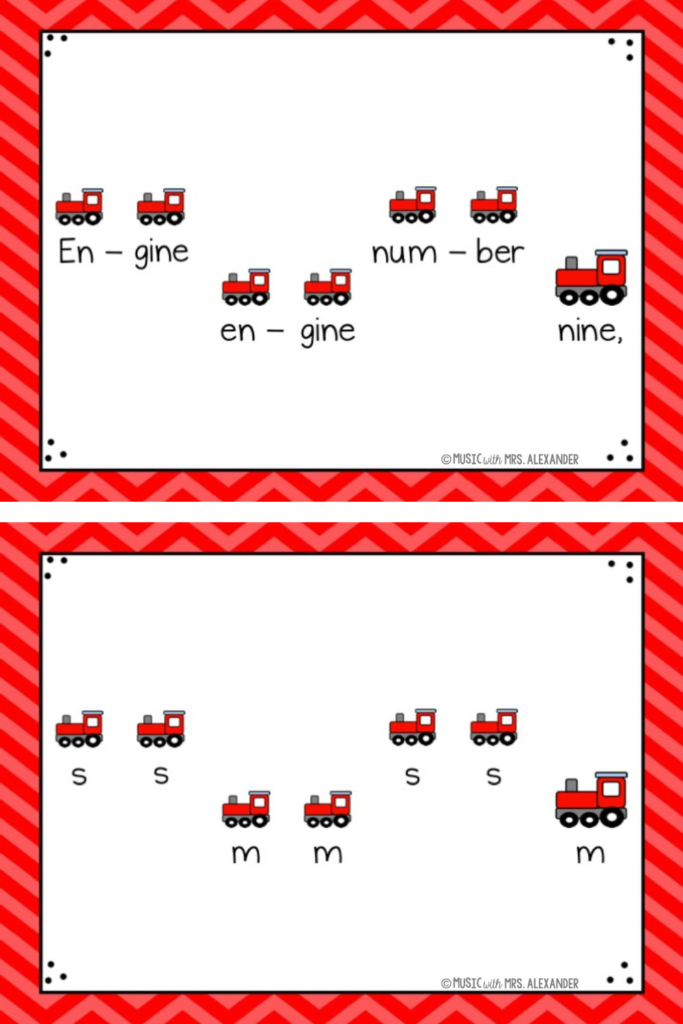
In the next lesson, we review sol and mi, notating the song using manipulatives on the music staff. First, we look at and sing the melody written in iconic notation. I ask the class, “What are the pictures trying to tell us?” We see that they match our singing voices–when the pictures are higher, our voices are higher. I introduce the word pitch to the class, and we label it as how high or low a sound is. Then, we sing the song, using our hands to show when our voices sing higher and lower.
Star Light, Star Bright
Star Light, Star Bright lends itself well to some beautiful improvisation opportunities for your students while introducing or reviewing sol and mi. We start by learning the song in phrases, moving our hands higher and lower to match our voices. As students become more comfortable, they sing while demonstrating the melodic contour with their hands. After learning the song, we move to barred instruments set up with only sol and mi bars. The class practices playing patterns on the two pitches on their own, then they echo the patterns I play for them. After a few turns, students switch while singing Star Light, Star Bright. You could also set up the barred instruments in the pentatonic scale and have your students improvise an interlude. Have them sing while accompanying the song on a simple octave or fifth bordun, then take turns improvising as a B section.
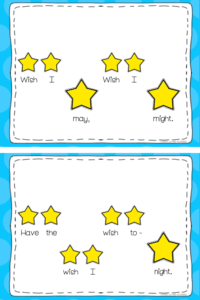
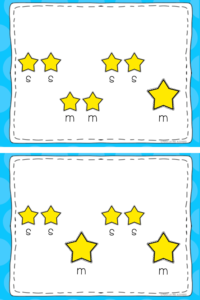
After spending a lesson or two on the instrument activity, we use the song to introduce/review sol and mi. We look at the iconic notation while singing the melody, noticing how it matches what our voices are doing. Then, we label the pitches with sol or mi and sing each phrase using solfege. To practice, the students use manipulatives to notate sol/mi patterns I sing for them. If they’re ready, I’ll even play a few on an instrument as an extra challenge!
Snail, Snail
I like using the song Snail, Snail for vocal explorations and teaching sol and mi. The snail vocal exploration cards are great for getting the littles into their head voices. Plus, they can work with a partner to create their own “snail patterns” using a dry erase board and marker. One partner draws a pattern, and the other partner sings it. Switch jobs and repeat!
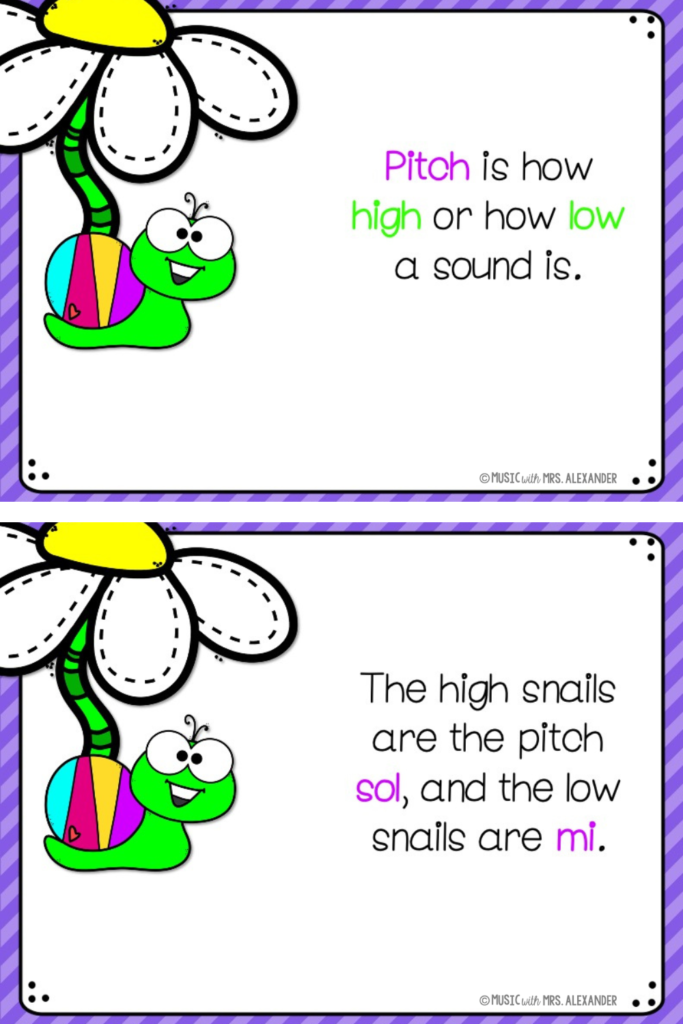
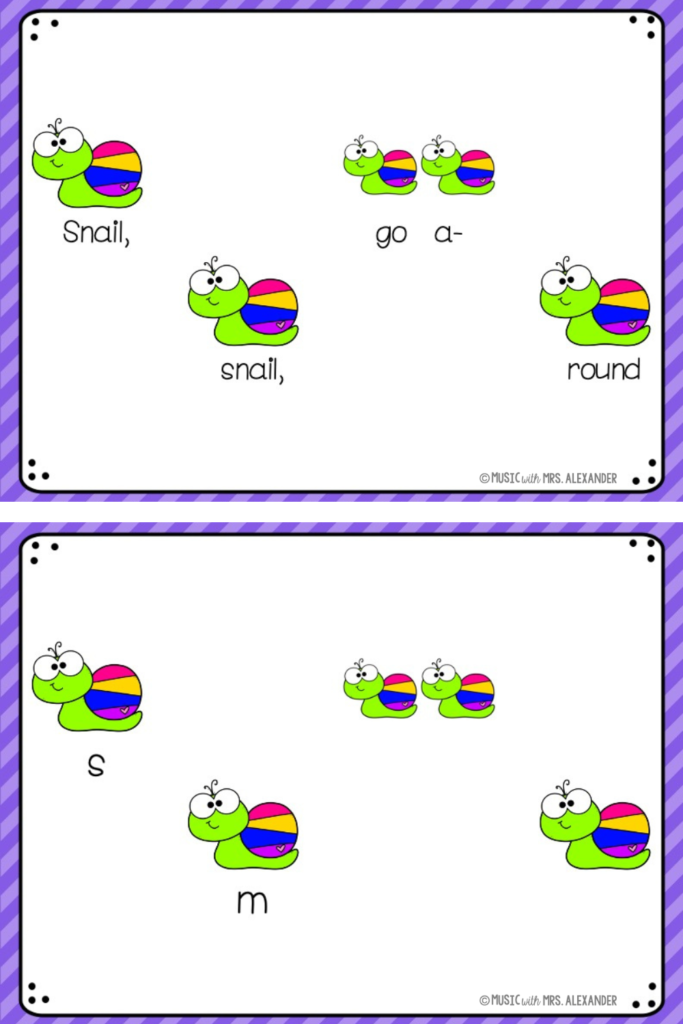
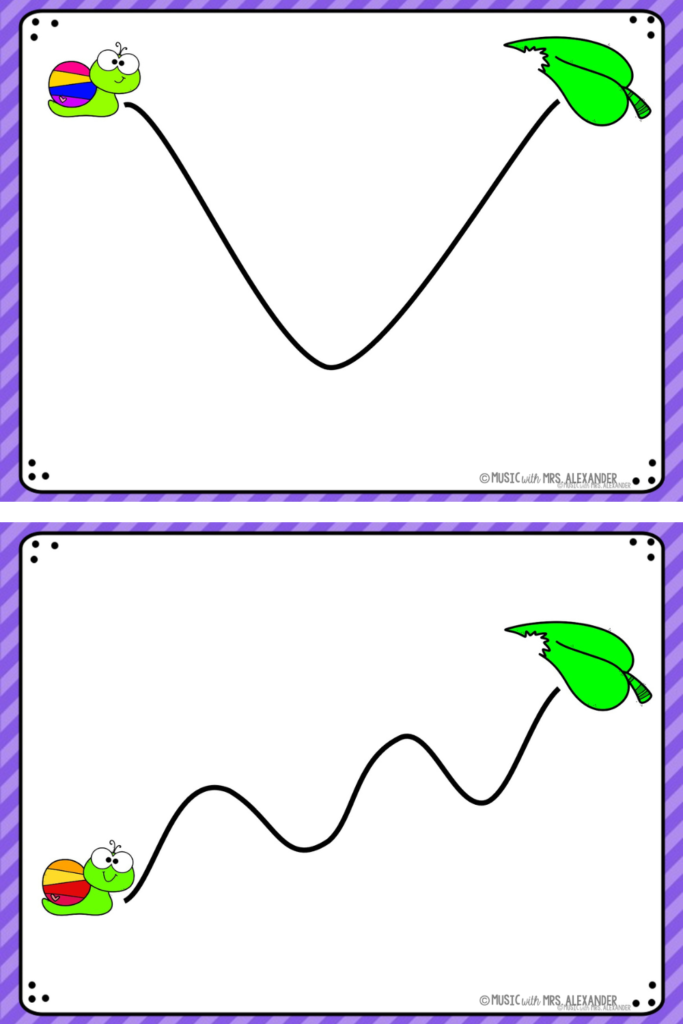
The melody is simple enough for young students to hear and notate. Use any manipulatives you have on hand (bingo chips, mini erasers, etc.) and have your students notate the melody. Depending on where you are in your curriculum, students can put the pitches higher and lower on a plain sheet of paper or a standard/modified music staff.
Activities for teaching sol and mi
Hands-on activities, manipulatives, and centers are a huge part of my lesson plans when teaching sol and mi. They allow my students to practice an abstract concept in a more concrete way. Here are my top three activities for practicing sol and mi in the classroom.
Melody Maker
Melody Maker is one of my go-to music centers for pitch in my classroom. It’s pretty simple, making it a great starting point for my students. For this activity, each student needs a music staff and something to use for notation–I like to use either bingo chips or math counters. Each group of students shares a set of melody cards. First, the students pull a card and read the melody on the outside. Then, they use their bingo chips to notate it on their music staff. Next comes the best part–they open the card to check their answers. This station is self-checking, y’all! They adjust what they’ve put on their music staff to match the correct answer (if needed), then put the card back and pull a new one. The process continues until they’ve completed all 12 cards in the deck.
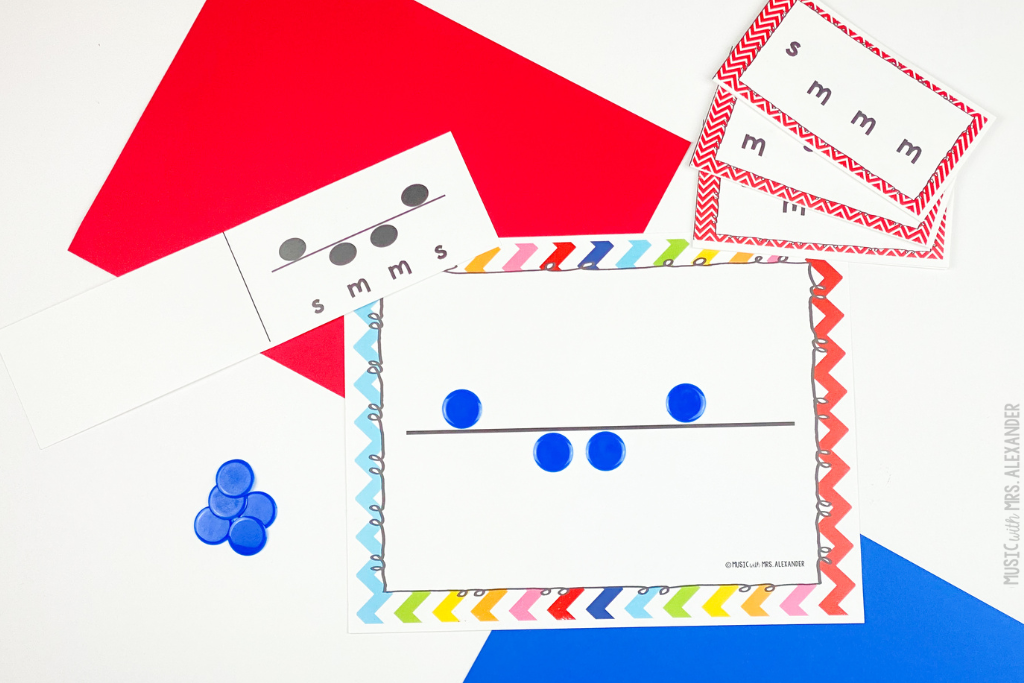
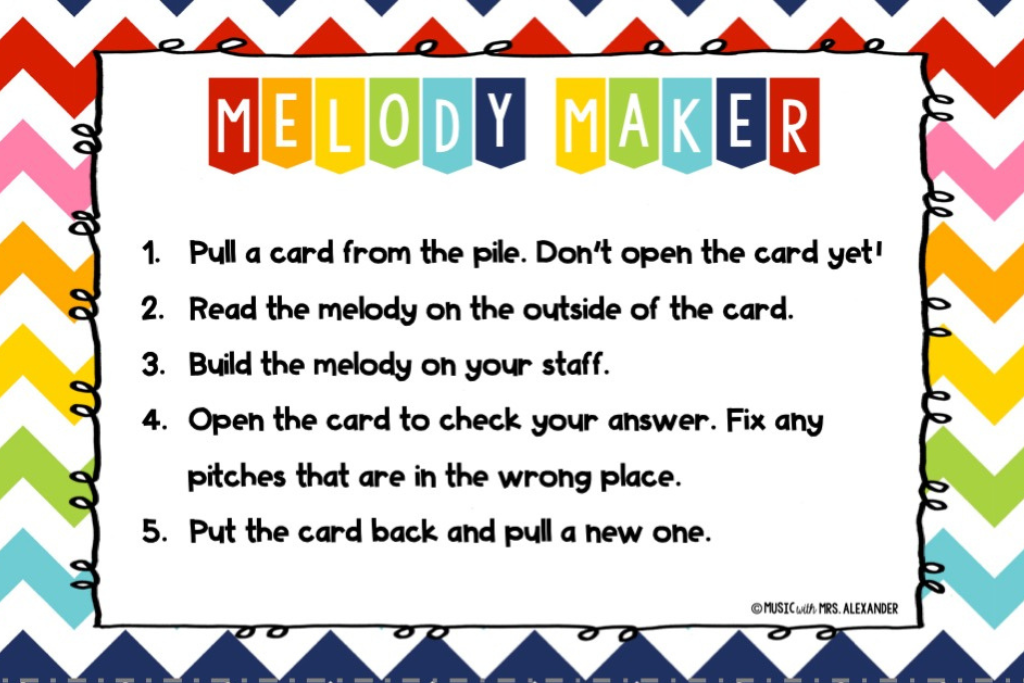
Roll-a-Melody
In Roll-a-Melody, each student (or pair of students) gets a music staff inside a dry erase sleeve, a cup with four dice, a dry erase marker, and an eraser. First, they shake up the dice and roll them out to create their melody. Then, they write the pitches under the staff and draw the noteheads on the lines and spaces. Once they are done writing, they go to an instrument to play their melody. I like using the resonator bells on the step stand because they can reinforce the low-to-high relationship in two ways: the left-to-right orientation of melodic instruments and the high/low through using the steps.
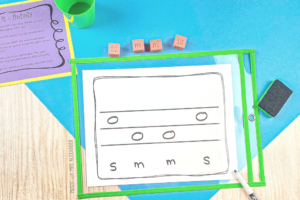
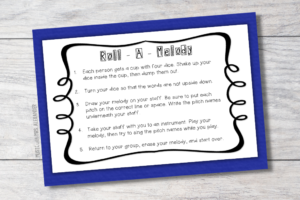
Stick to Staff Matching Games
Fall Leaves Melody Match-Up
I have stick-to-staff matching games for all seasons in my music room! They are a quick and fun way to practice reading melodic notation while getting students up and moving. In fall, we use autumn leaves for our matching games. Each leaf is split in two–the melody (on the music staff) is on one half, and the stick notation of the melody is on the other. For my younger students, we use the leaves as a melody scavenger hunt. I put several of the stick notation halves around the music room. Then, they work with a partner or a team to search for their matching half. Once they think they have a match, I scan the QR code on the leaf and have them check it. I use my AppleTV to AirPlay my iPad screen on my smartboard so that everyone can see without crowding around my iPad screen! Once everyone has found a match, we shuffle the leaf halves and play again.
I’ve also used this activity as a small group station. Each group gets a bag with 12 leaf halves, six melodies total. They work as a team to match their leaves, then scan the QR code with an iPad to check their answers. Once they finish one set, they bring their bag to me to switch out for another. Working through all the sets typically takes the entire class period, making this a great activity for a game day in the music room!
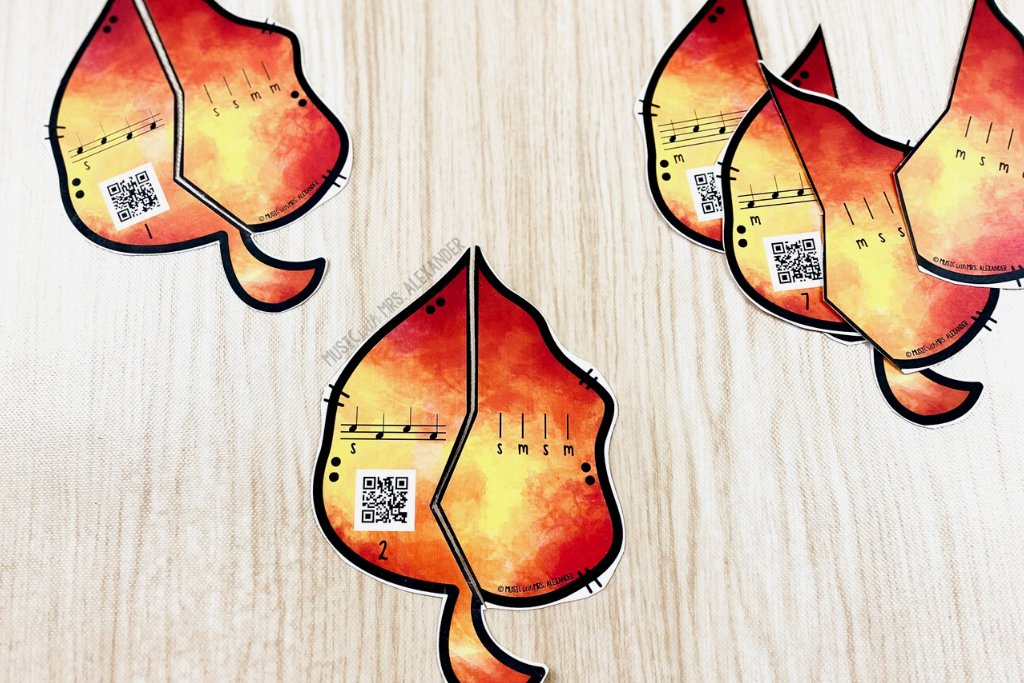
Mitten Melody Match-Up
In winter, we use mittens! Another idea for this activity is to give each student a mitten and then find their match. Once they are matched, they come to me to scan their QR code. If they’re correct, they sit with their partner while the rest of the class keeps searching. After everyone has found their matching melody, we shuffle the mittens and play again. They love for me to time them to see how long it takes for everyone to get matched up! It’s like a game of Beat the Clock tied in with melody review!
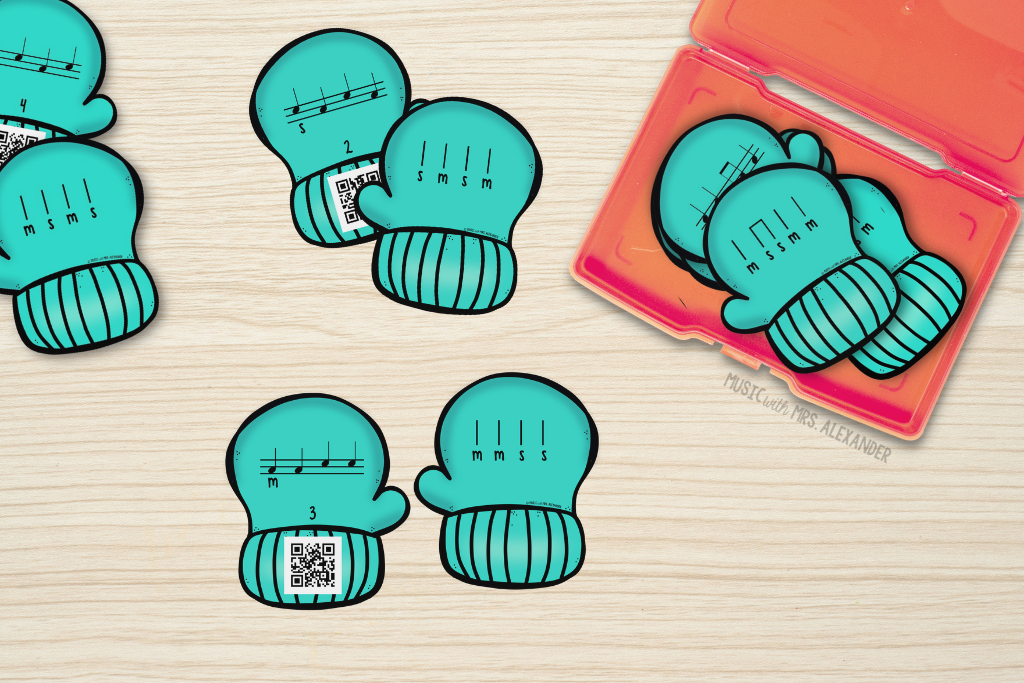
I hope this post has given you some good ideas for teaching sol and mi in your elementary music classroom. If you’re looking to simplify your lesson planning, I also have complete units for teaching sol and mi available–lesson plans, visuals, student materials, and even center activities! Click the links below to check them out!
